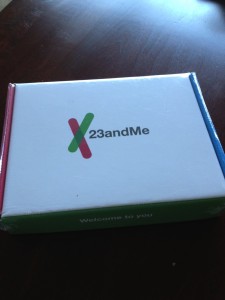We have just found out a bit more about our place in the U2 haplotype, and in the FTDNA community. Thanks to information kindly supplied by the FTDNA Haplotype U2 Project coordinator, the picture has become more clear since the time we had the full mitochondrial sequencing (FMS) done.
My mom’s mtDNA puts her in a subclade that is rather rare. Among the known samples, it has not acquired any mutations for 7500 years, making it difficult to place geographically. Two other known samples are related to Britain and Ireland, and the long presence of U2 and U2e in prehistoric Europe is well known. In 5500 BC or therabouts, the farming practices of the Neolithic were finally moving beyond Greece. Hunter-gatherers still occupied the majority of the continent. Life expectancy among the Neolithic farmers was 20-25 years of age, and 50% of children didn’t make it to 15. Even so, one imagines that the farmers thought themselves better off than the ones who didn’t farm. The question that remains to be answered is how many of the Neolithic people were incomers, as opposed to how many were adopting the new culture.
One zooarchaeologist, Nerissa Russell, has conjectured that the use of cattle as bride-wealth may have eased the spread of the Neolithic farming economy as it moved through an already-inhabited Europe. This is one way that pre-Neolithic genetic lineages may have survived the immigrants.
Until there is a lot more mtDNA evidence, it will be difficult to determine how clade U2e came to be in Europe. Most of U2 is actually found in South Asia. But this haplotype is so ancient that there would have been plenty of time for U2e women to move slowly west, arriving well before the European Neolithic. Or perhaps they moved just far enough west to move into Europe along with the Neolithic pioneers.
From the other direction, from the present, it’s pretty certain my mom’s foremothers lived either in the British Isles or western Europe (probably the Rhineland) in the centuries before emigrating to North America. In terms of genealogy, this hinges on the origin of a woman whose married name was Esther North. In colonial Virginia’s Shenandoah Valley, settlers from Germany mixed with English and Scotch-Irish settlers, so Esther’s origins could go either way. Her daughter married the son of an immigrant from Switzerland, and their daughter married the son of immigrants from Westphalia. We are really lucky in that these families have been very well documented by very hard-working genealogists.
There will come a point when the historical record just won’t be there for my line of foremothers, and that provides a big motivation for participating in mtDNA analysis. Right now I’m hoping that genetic testing will get really trendy so that enough data will become available to fill in the gaps, not just in prehistory, but in the historical times where ordinary farming folk aren’t documented.


